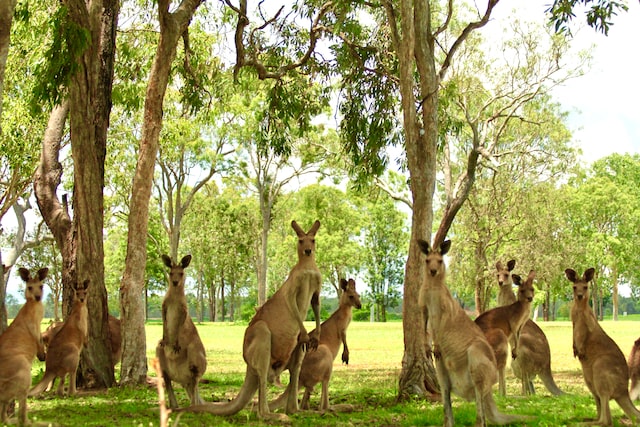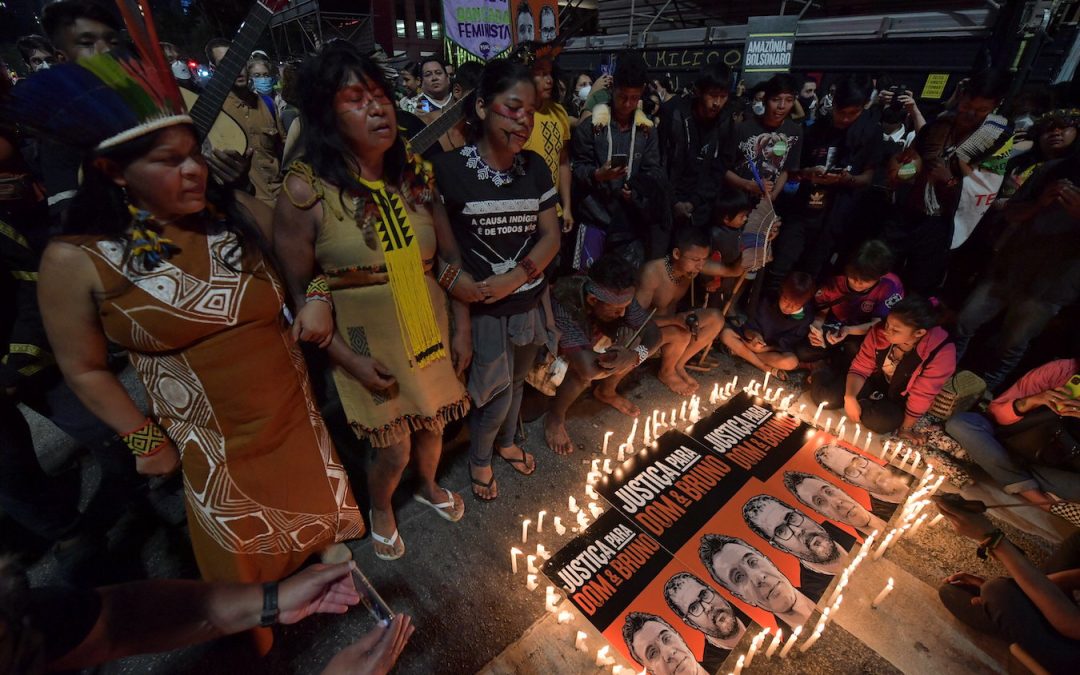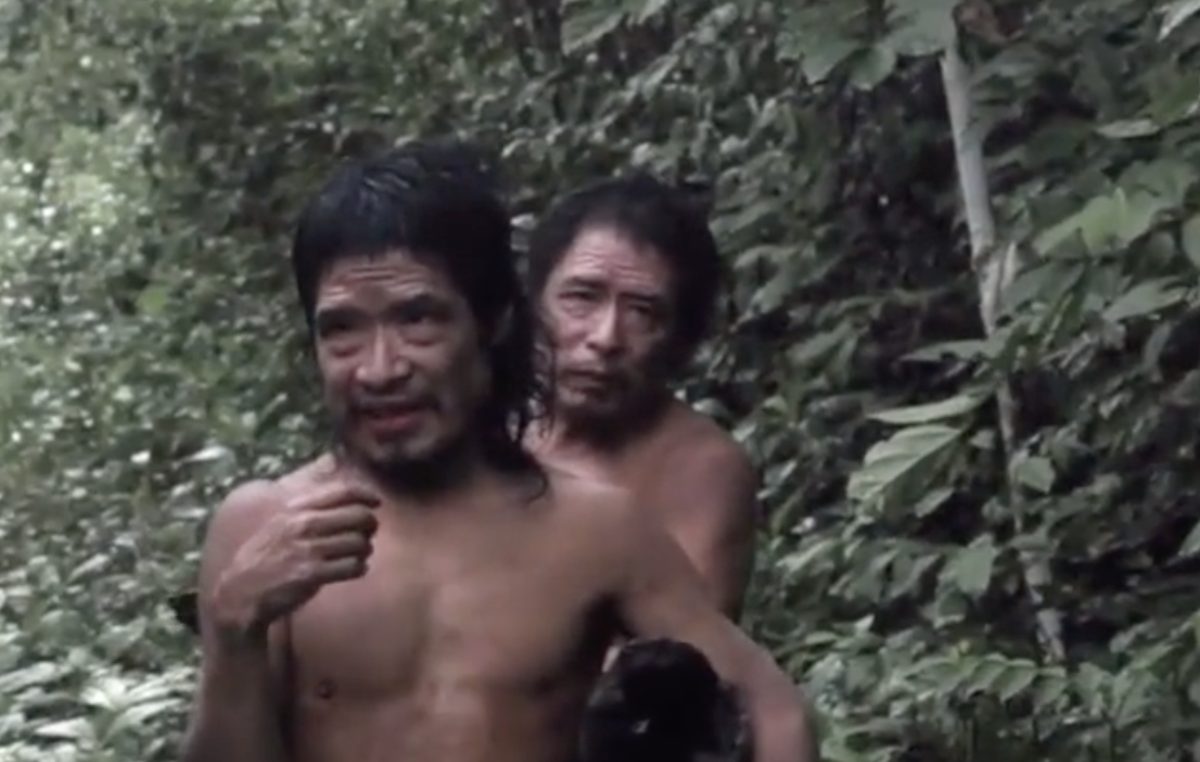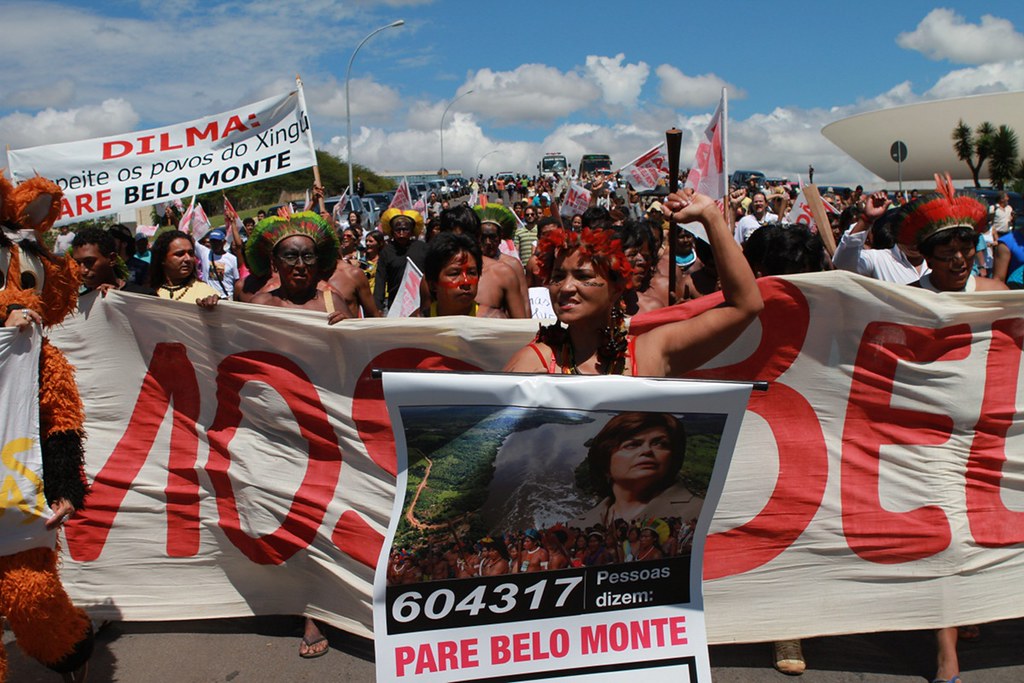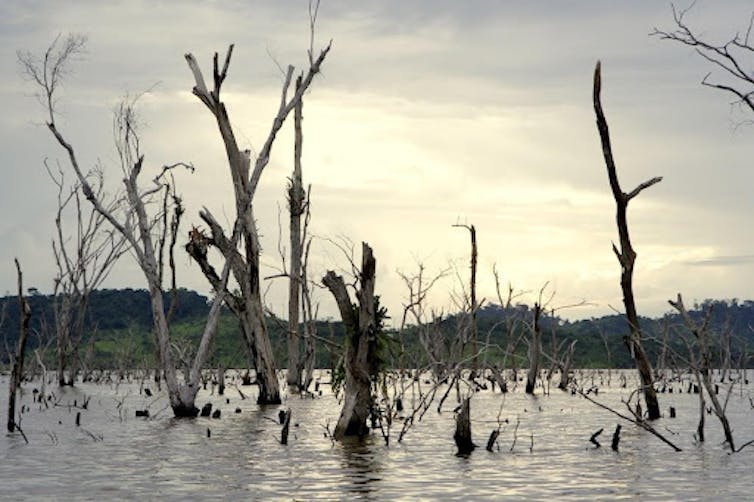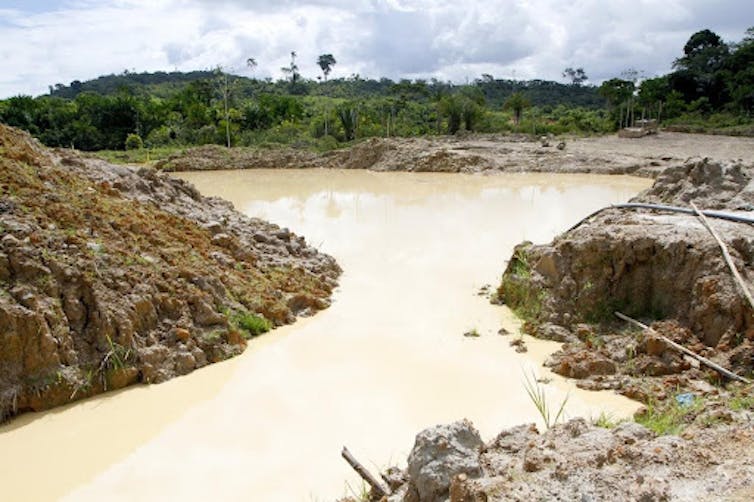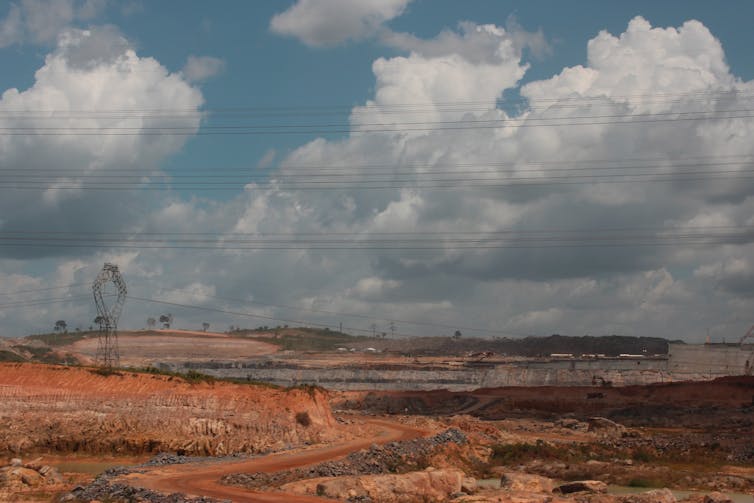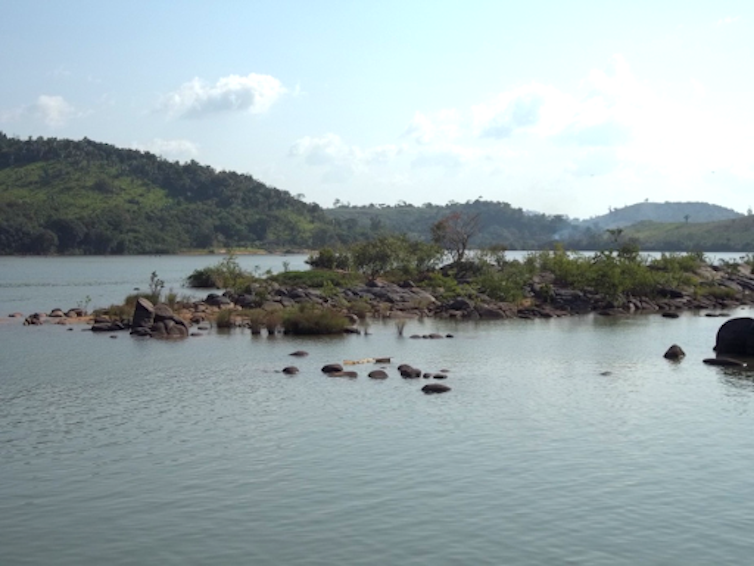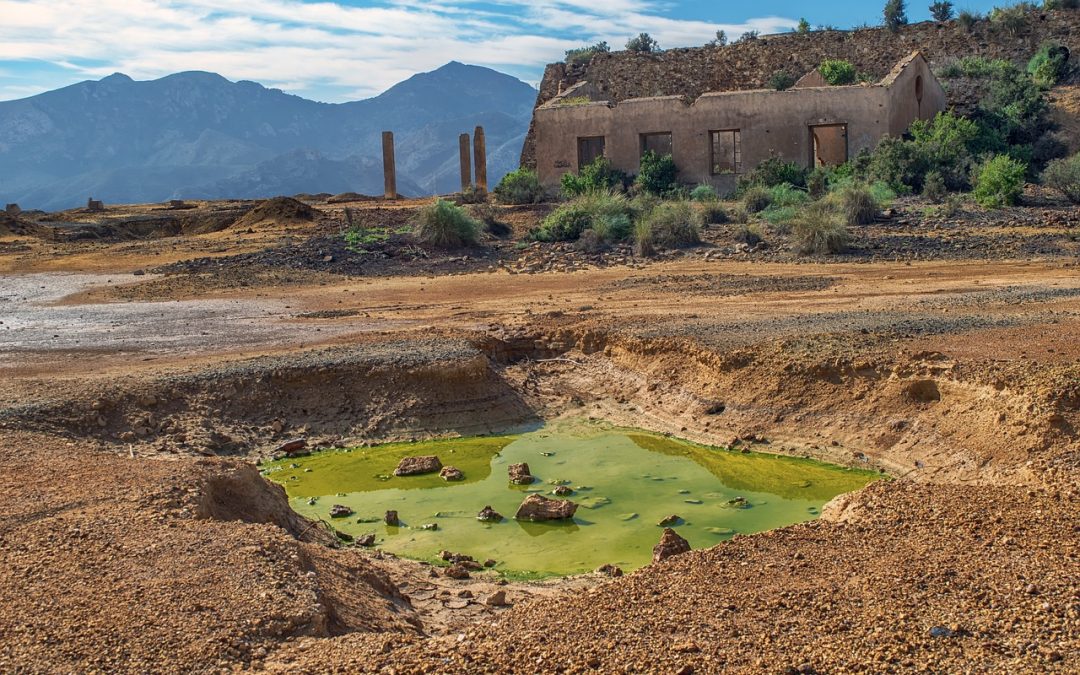
Salt Mining Sinks a City, Displacing Thousands in Brazil
Editor’s note: Any compensation from chemical companies cannot make up for the repercussions of mining, in this case, salt mining. The petrochemical company Braskem, the largest plastic producer in the Americas, is responsible for the displacement of people and was well aware of the risk that the city of Maceió could sink. Yet it kept on operating the mine. As long as companies like Braskem put profit above all other needs – social, environmental, health of communities and thriving wild habitats – this ecocrisis in which we live will only get worse. It can’t go on like this anymore.
By Peter Speetjens/Mongabay
Decades of salt mining in Maceió, in northeastern Brazil, have led to earthquakes and cracks in several of the city’s neighborhoods, making buildings there unhabitable. As a result, about 60,000 people have been displaced.
Braskem, the chemical giant that acquired the original salt mining company, has agreed with authorities to clean up the affected neighborhoods and compensate locals. But those affected complain that Braskem has offered them meager amounts, with no negotiation; the sums don’t cover the value of their properties, while compensation for moral damage is also extremely low.
Locals indirectly affected do not receive compensation and continue to suffer losses, as properties within a 1-kilometer (0.6-mile) radius around the disaster zone can no longer be insured and lose value; businesses adjacent to the now unhabitable neighborhoods have also lost customers.
Maceió, Alagoas, Brazil
Streets lie deserted. Gardens have overgrown homes. Doors and windows are bricked up. The Bebedouro neighborhood in Maceió, in Brazil’s northeastern coastal state of Alagoas, is a shadow of its former self. And soon not even that.
Every building there is numbered. As soon as a property has been fenced off by iron sheets, the bulldozers will appear to flatten the land. Large parts of the historical area have already been turned into an anonymous plain.
Bebedouro is one of Maceió’s suburbs where officially nobody can live anymore. Following heavy rains in February 2018, large cracks appeared in floors and walls. Then, on March 2, a magnitude 2.5 earthquake hit the city of some 960,000 people, widening cracks and tearing up asphalt.
“Everyone went out on the street in shock, as this had never happened before,” said Neirivane Ferreira, a Bebedouro resident at the time. “Only later we learned on the news it had been an earthquake with its epicenter in the neighboring area of Pinheiro.”
But Maceió didn’t have a history of seismic activity. In 2019, the Brazil Geological Survey concluded that parts of Maceió were subsiding due to nearly 50 years of rock salt extraction, which caused the tremors and cracking. As a result, five neighborhoods were declared unhabitable by the local government; 60,000 people were forcibly displaced.
Salt mining continues
Compensation for residents was left with petrochemical company Braskem, the biggest plastics manufacturer in the Americas. But those affected complain that Braskem’s compensation program has been abusive, lacking enough coverage and often forcing them to choose between low payments or no compensation at all.
Maceió’s salt deposits were discovered during a quest for oil in 1943. Since extraction started in 1976, the city has been pierced by 35 mine shafts, the deepest reaching up to 2 kilometers (1.2 miles) below the surface.
The salt was first mined by Brazilian company Salgema, which in 1996 became Trikem, which in 2002 merged into Braskem.
One study from 2010 warned that higher underground pressure due to rock salt mining could cause the ground to sink, while subsequent research warned that subsidence caused by rock salt mining could reach up to 1.5 m (4.9 ft) in parts of Maceió. Yet, salt extraction continued as before.
“The extraction of rock salt in Maceió has always been internally and externally monitored, using the best techniques available, supervised by the competent public bodies and with all the necessary permits,” Braskem PR consultant Nicolas Tamasauskas said in an email to Mongabay. “Following the events in 2018, Braskem stopped extracting and presented a permanent closure plan that was accepted by the national mining authorities.”
As a result, since 2018, more than 14,000 premises, including homes, companies, churches and schools, have been declared unfit for habitation in the five suburbs. More than 60,000 inhabitants were forced to leave their homes. More than 4,500 people lost their businesses. Thousands had to look for alternative jobs, schools, sport clubs and health clinics.
Ferreira said the move felt abusive. “It felt like a second act of violence, as we were never consulted. We were left totally vulnerable, while Braskem was free to dominate the negotiations and establish derisory values.”
Victims claim insufficient compensation
In January 2020, Braskem reached a settlement with public prosecutors and in cooperation with the authorities launched the Financial Compensation and Relocation Support Program. Through it, Braskem helps residents search for a new home, pays for relocation and offers a temporary rental allowance of 1,000 reais ($200) per month.
Braskem works with so-called “facilitators,” who appraise properties, assist with paperwork and eventually negotiate with residents the final value of their properties. Compensation covers that value plus 40,000 reais ($7,822) for “moral damages.”
On March 31, according to Braskem, 14,400 of the 14,500 properties in the crisis area had been vacated. The company had issued 19,129 compensation proposals, of which 18,256 were accepted.
The company has allocated a budget of 14.4 billion reais ($2.8 billion) to deal with the disaster. It already spent 9.2 billion reais ($1.8 billion), some two-thirds of which was paid as compensation for damage to private and public properties. The remainder mainly concerned the process of closing the mines.
“There were no negotiations,” said Alexandre de Moraes Sampaio, president of the Association of Entrepreneurs and Victims of Mining in Maceió. “Braskem prepares a proposal, which you accept or not. If you don’t, as I did, then it turns silent for six months before you hear from them again.”
Sampaio owned a real estate agency and a small marketing company in Pinheiro, while his wife had a psychological practice. Pinheiro was the first Maceió neighborhood to experience cracking and degradation in 2018. Braskem offered them one payment for all three entities.
“I don’t want to go into detail, but it was a ridiculously low amount,” Sampaio told Mongabay. “In the end I received more, but it was still nothing compared to my real losses. However, after three years of negotiating, with hardly any income, I had no choice but to accept.”
Sampaio was on the brink of bankruptcy. Today, he lives some 100 km (62 mi) south of Maceió, where he has managed to revitalize his real estate firm. Most victims found themselves in a weak negotiating position, as they had been forced to leave their properties.
Disaster zone much larger
Ferreira also negotiated for three years to receive compensation for her Bebedouro home. “It was shameful what Braskem offered,” she said. “In most cases, Braskem offered a sum that amounted to not even half the property’s value, which made it very hard to find something similar elsewhere.”
According to Sampaio, damages related to the mining disaster have been reduced to “land and stones,” as Braskem pays the bare minimum for properties, disregarding many other costs.
“The compensation for moral damages is a mere pittance,” he said. “Braskem … should pay a higher amount to every victim, not just owners.”
Sampaio said that the 1.7 billion reais ($332 million) compensation Braskem paid the Maceió municipality was below par, as it did not account for things as lost income from taxes and lost utilities and infrastructure. “Braskem arguably should have paid four times more,” he said.
Damages exist even outside the disaster zone. The difference between what is considered safe and uninhabitable is at times only a street wide. A restaurant or company located safely “across the street” that lost half its market due to the relocation of 60,000 people receives nothing.
“Insurance companies no longer insure properties in a radius of 1 km [0.6 mi] around the designated disaster zone,” Sampoio said. “As a result, some 40,000 dwellings lost 30% of their value. Yet, none of this is compensated.”
Braskem now owns the city
In December 2023, Intercept Brasil unveiled a leaked compensation agreement, containing several special clauses. First, the signatory is not allowed to disclose the amount of compensation, otherwise Braskem can reclaim the payment.
Second, to finalize the compensation agreement, all property deeds must be handed over to Braskem. As a result, the chemical company today owns 99% of the disaster area. People in Maceió fear that Braskem aims to turn the disaster into an opportunity for future development.
According to Tamasauskas, that is not the case. He pointed at an agreement signed by Braskem and the Maceió municipality, which states the former “will not build in uninhabitable areas for housing or commercial purposes. And a change in ownership will not change that.”
Brazilian construction giant Novonor is Braskem’s majority owner, followed by Petrobras. Formerly known as Odebrecht, Novonor is in talks with the Abu Dhabi National Oil Company to sell its Braskem stake for an estimated $2 billion.
A third clause in the contract states that no one can sue Braskem on the outcome of a current or future investigation. In December 2023, a parliamentary inquiry into Braskem’s handling of the mining disaster was launched.
Finding justice abroad
In 2020, eleven victims sued Braskem in the Dutch city of Rotterdam, where the firm’s European head office and two financial holdings are based. The claimants demand that Braskem will be held liable for the disaster and needs to pay for damages.
“Braskem’s financial compensation program has been criticized for failing to hold Braskem liable for the disaster it caused,” said Bruna Ficklscherer, legal director of Pogust Goodhead, the British law firm representing the eleven victims.
Ficklscherer confirmed that people affected by the disaster, yet located outside the designated disaster zone, have had no opportunity to receive compensation, even though education, employment, health services and transportation have deteriorated in the neighborhoods surrounding the risk area.
Braskem tried to have the case dismissed by arguing the Dutch court lacked jurisdiction, as the case solely concerned Brazil. But the judge rejected the claim, on the grounds that the company has financial entities and its European head office in Rotterdam.
During the first hearing in February, Braskem consistently referred to the mining disaster as “the geological event,” while it presented the compensation program as the most beneficial possible. The eleven claimants argued the exact opposite. The Dutch court is expected to issue a verdict in towards the end of the year.
Meanwhile, Maceió’s worries are all but over. On Nov. 28, 2023, a rupture occurred in Braskem’s mine 18 in the neighborhood of Mutange. A week later, part of the suburb had subsided by almost 2 m (6.6 ft).
Fearing immediate collapse, the authorities declared a state of emergency, even though the area had been vacated. Today, nothing remains of Mutange. Braskem’s bulldozers have razed the neighborhood to the ground.
Many of the walls still standing in Bebedouro, and elsewhere in Maceió’s disaster area, are now covered in graffiti. “Here lived art, happiness, sadness and disaster,” one reads; another simply reads, “justice.”
Title Photo by Enrique/Pixabay

